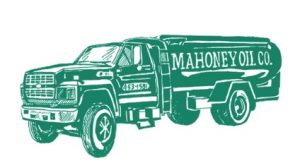According to my Italian Wine Scholar textbook, Italy’s Vino Nobile di Montepulciano red wine has enjoyed great fame for centuries.
- French philosopher Voltaire mentioned it in his famous 18th-century work “Candide.”
- Famed novelist Alexander Dumas wrote about it in “The Count of Monte Cristo.”
- And Thomas Jefferson, America’s third president, lauded it as his favorite Tuscan wine.
Today, Vinous owner and wine critic Antonio Galloni has placed the exquisite Sangiovese-based wine on his top wines to watch list.
On May 8, at the City Winery in Boston, Galloni led a stimulating Master Class and Guided Wine Tasting titled “Vino Nobile di Montepulciano: The History-Teller”. The program, sponsored by Italy’s Consorzio di Vino Nobile di Montalcino, drew a capacity crowd of 60 industry types, including food, wine and travel writers.

First, Vino Nobile di Montepulciano – the Tuscan wine and place – is not to be confused with Montepulciano d’Abruzzi, which is the name of an Italian native grape and red wine made in the province of Abruzzi.
Second, Montepulciano is a beautiful, medieval hillside town located in southern Tuscany, in the province of Siena. Rome is about 120 miles away to the south.
It is the center of a wine-growing region that produces one of Italy’s historically most prestigious wines, Vino Nobile di Montepulciano. The DOCG appellation shares the same name as the wine.
As noted by Galloni, Vino Nobile – once the revered drink of noblemen, artists, popes, and prominent Europeans from the 14th- to 19th centuries – experienced a reversal of fortune in the intervening years.
The rise of other Tuscan wines – most notably Chianti Classico and Brunello di Montalcino – as well as complacency among Vino Nobile’s producers played a role in the wine’s fall from grace.
A move to restore Vino Nobile’s stature began in 1980. That’s when Italian authorities awarded DOCG status to the Vino Nobile di Montepulciano appellation. While recognizing Vino Nobile’s potential to be a superior wine, the DOCG designation required producers to meet the strictest quality control standards embodied in Italy’s wine laws.
For the past 43 years, many Montepulciano vintners – new and old – have worked hard to meet the challenges and improve the wine’s top tier standing. They’re upgraded equipment and adopted new wine-making approaches in vineyards and production facilities, including a commitment to sustainable farming methods that respect the land and highlight Montepulciano’s sense of place.

Galloni observed: “We’re at an inflection point with this appellation. Classic traditions of the past and modern approaches … lower yields, sustainable farming, use of oak (in aging) …. Producers are innovating. The question is how does the ‘chaos’ impact Montepulciano and its wine of the future?”
To make his point, Galloni personally selected 11 wines from different producers that were tasted over the course of the 90-minute seminar. Galloni’s intent was to show the diverse range of styles, from light and airy to full-bodied and intense, being produced in this notable region.
One characteristic that stood out in most of the wines sampled – at least in my view – was Vino Nobile’s freshness, purity of fruit, minerality and balance. As Galloni noted, vintners are making a concerted effort to emphasize Vino Nobile’s unique terroir.
And at its highest quality level, Vino Nobile di Montepulciano is truly a regal wine.
What follows is a summation of the Vino Nobile di Montepulciano (VNM) wines tasted.
Talosa “Alboreto” VNM 2020, $22, abv. 14.5% – This 100% sangiovese wine matures for two years in a combination of small and large wooden barrels, some as old as 45 years, in underground cellars that date back to the 16th century. For the first wine of the tasting, Alboreto made a good, welcoming impression. Ruby-colored and aromatic (cherry blossoms), the wine is velvety smooth, vibrant, and rich in plum and red fruit flavors. It ends dry with subtle rustic herb notes. About 50,000 bottles are produced annually from Talosa’s vineyards located in Pietrose, the heart of the Montepulciano region and its limestone-rich soils that yield Vino Nobile’s classic mineral traits.
Dei VNM 2020, $36, abv. 14.5% – Art, music and wine play a big part at Cantine Dei, an estate which has been managed by opera singer Maria Caterina Dei since the mid-1990s. Her grandfather Alibranda founded the winery in 1964 with the purchase of land in Bossona where he planted vineyards. The winery’s first Montepulciano was produced in 1985. In 2014, Caterina hired Paolo Caciorgnia, one of Italy’s leading oenologists, to assist in Dei’s viticultural operations.
The 2020 vintage – (90% sangiovese, 10% canaiolo) – reflects Dei’s passion and personality: elegant, intense and harmonious. Galloni cited the wine’s “depth” and “complex textural feel” that he said defines Dei’s “classic style.”
About 120,000 bottles were produced.
 Poliziano “Asinone” VNM 2020, $65, abv. 14% – A powerhouse, single-vineyard Montepulciano (100% sangiovese) that combines complexity with finesse, resulting in a spectacular wine that will age well for 10-15 years.
Poliziano “Asinone” VNM 2020, $65, abv. 14% – A powerhouse, single-vineyard Montepulciano (100% sangiovese) that combines complexity with finesse, resulting in a spectacular wine that will age well for 10-15 years.
Galloni termed Asinone a “wine for the future”, citing its tight, mineral finish that is destined to soften in the cellar. Still, all the ingredients are present for a beautiful wine that can be consumed now: gorgeous plum and dark cherry fruit flavors, velvety tannins, and bright acidity. One of my favorites, it’s primed to accompany a grilled Fiorentina steak. Well worth the price. 25,000 bottles produced.
 “La Braccesca” VNM 2020 Marchesi Antinori, $30, abv.14% – The style is round and rich, leading me to describe La Braccesca as a “California” Montepulciano that would appeal to the masses. The presence of oak on the nose – vanilla and strawberry – is a tip-off as to what is to follow in this sangiovese-merlot blend. It’s a delicious, full-favored, ready-to-drink-now version that flows easily on the palate. Ripe cherry fruit picks up vanilla and chocolate traits. All mesh well with food-friendly acidity and silky, sweet tannins.
“La Braccesca” VNM 2020 Marchesi Antinori, $30, abv.14% – The style is round and rich, leading me to describe La Braccesca as a “California” Montepulciano that would appeal to the masses. The presence of oak on the nose – vanilla and strawberry – is a tip-off as to what is to follow in this sangiovese-merlot blend. It’s a delicious, full-favored, ready-to-drink-now version that flows easily on the palate. Ripe cherry fruit picks up vanilla and chocolate traits. All mesh well with food-friendly acidity and silky, sweet tannins.
Galloni said La Bracessca represents a “nice middle ground” in combining new and old oak during different phases of the maturation process. The wines also ages one year in bottle prior to release. The annual production tops 210,000 bottles.
Tenuta Valdipiatta “Vigna d’Alfiero” VNM 2020, $40, abv. 14% – The father-daughter team of Guilio and Miriam Caporali have turned this small, picturesque estate into an eco-friendly oasis while producing a high-quality, single vineyard Montepulciano (100% sangiovese). Miriam, who trained in Bordeaux, has been leading sustainable farming efforts since 2002. The winery makes its own “green” fertilizer and compost which “ferments” for a year before being used in vineyards. Such commitment to the land is rewarded in a distinctive, superbly structured wine that screams for a place at the table with an elaborate meal of pasta with a rich ragu`, grilled meats, veal chops, and ribs.
The 2020 vintage is a serious Montepulciano. Concentrated aromas (cherry, violets) and flavors (plum, blackberries) penetrate the senses. The mouthfeel is vivacious and smooth. The chalky finish mixes white and black pepper.
Fermentation take place in stainless steel tanks with daily pumping over and maceration for 20 days. The wine then ages 18 months in 225-liter French Allier barriques, of which 20% is new oak.
Only 4,000 bottles are produced annually.
Boscarelli VNM 2020, $25, abv. 14% – This is a pretty wine (red ruby with garnet hues) that captures the interest with its fresh, lighter style and smooth frame. The sangiovese (85%) and canaiolo (15%) mix serves as a good introduction to Montepulciano’s red fruit notes. “It’s not as complex a wine as others but it’s accessible and enjoyable,” said Galloni. About 50,000 bottles were produced.
 Avignonesi VNM 2019, $28, abv. 13.5% – There’s a lot of subtlety in this wine which conveys both accessibility and complexity. It adds up to a truly appealing wine and one of the best from my palate’s standpoint. While light and airy with beautiful floral aromas, the garnet-colored wine strikes gold with cherry-fruit expressions that remain intact as secondary characteristics emerge mid-palate and linger nicely. There’s violet, licorice, plum, and vanilla. Overall, there’s creamy elegance in every drop of this 100% sangiovese. Fabulous for the price and easily available with 210,000 bottles produced.
Avignonesi VNM 2019, $28, abv. 13.5% – There’s a lot of subtlety in this wine which conveys both accessibility and complexity. It adds up to a truly appealing wine and one of the best from my palate’s standpoint. While light and airy with beautiful floral aromas, the garnet-colored wine strikes gold with cherry-fruit expressions that remain intact as secondary characteristics emerge mid-palate and linger nicely. There’s violet, licorice, plum, and vanilla. Overall, there’s creamy elegance in every drop of this 100% sangiovese. Fabulous for the price and easily available with 210,000 bottles produced.
Frescobaldi “Tenuta Calimaia” VNM 2020, $28, abv. 14.5% – A dark red, intensely  aromatic Vino Nobile that is primed and polished for the bright lights of any dinner menu. “By far it’s the most flashy, extroverted wine” of the tasting group, said Galloni. Indeed. Calimaia’s style is bold from the get-go. The first impression wafts up from the glass with the strong scent of vanilla beans and dark chocolate. On the palate, generous candied strawberry and cherry flavors flow across a silky frame. The finish is dry, spicy and long.
aromatic Vino Nobile that is primed and polished for the bright lights of any dinner menu. “By far it’s the most flashy, extroverted wine” of the tasting group, said Galloni. Indeed. Calimaia’s style is bold from the get-go. The first impression wafts up from the glass with the strong scent of vanilla beans and dark chocolate. On the palate, generous candied strawberry and cherry flavors flow across a silky frame. The finish is dry, spicy and long.
Overall, it’s a delicious wine that needs no wait time to experience. “Take it home, open it and enjoy it,” said Galloni.
Frescobaldi produced 50,000 bottles of Calimaia, which is a mix of 90% sangiovese and 10% of other local red varietals.
Montemercurio “Messaggero” VNM 2018, $45, abv. 15% – With five years of aging to its credit (24 months in wood), Messaggero is showing graceful character in its velvety texture, balanced acidity and complex flavors. When this wine sits on the tongue, it stimulates the taste buds with incredible layers of tart fruit, licorice, and wild herbs. The mouthfeel is pure without a trace of manipulation.
According to Galloni, Montemecurio is an “elite estate” and Messaggero is a “serious wine” for loyal drinkers of Vino Nobile di Montepulciano.
Sangiovese amounts to 95% of Messaggero’s blend, the rest belonging to canaiolo nero. About 15,000 bottles were produced for the 2018 vintage.
 Villa Anna VNM 2018, $22, abv. 13% – Usually, after tasting 10 wines, the last one gets short shrift from a weary palate. But Villa Anna snapped my palate back to attention for its classic, no-frills production that carried all the essentials of a well-crafted wine.
Villa Anna VNM 2018, $22, abv. 13% – Usually, after tasting 10 wines, the last one gets short shrift from a weary palate. But Villa Anna snapped my palate back to attention for its classic, no-frills production that carried all the essentials of a well-crafted wine.
Galloni said Villa Anna represented “a change in velocity” while noting a “delicate, lighter” structure of a Vino Nobile that was no less satisfying from the others; Villa Anna has a personality all its own.
Produced by an all-female winery, led by Simona Ruggeri Fabroni and her two daughters, Villa Anna is a five-grape blend dominated by estate-grown sangiovese (85%). The remaining 15% is a combination of mammolo, canaiolo, colorino and merlot.
After pressing, the juice undergoes a 20-day maceration in steel vats. The wine matures for 24 months in a mixture of Slavonian and French oak. Once bottled, it rests of another year in an air-conditioned room.
Cedar, tobacco and licorice notes mark Villa Anna’s aromatic introduction followed by dried black cherry and raspberry on the palate
Overall, Villa Anna’s restrained style delivers simple elegance and quality at a fair price. About 20,000 bottles were produced in 2018.















